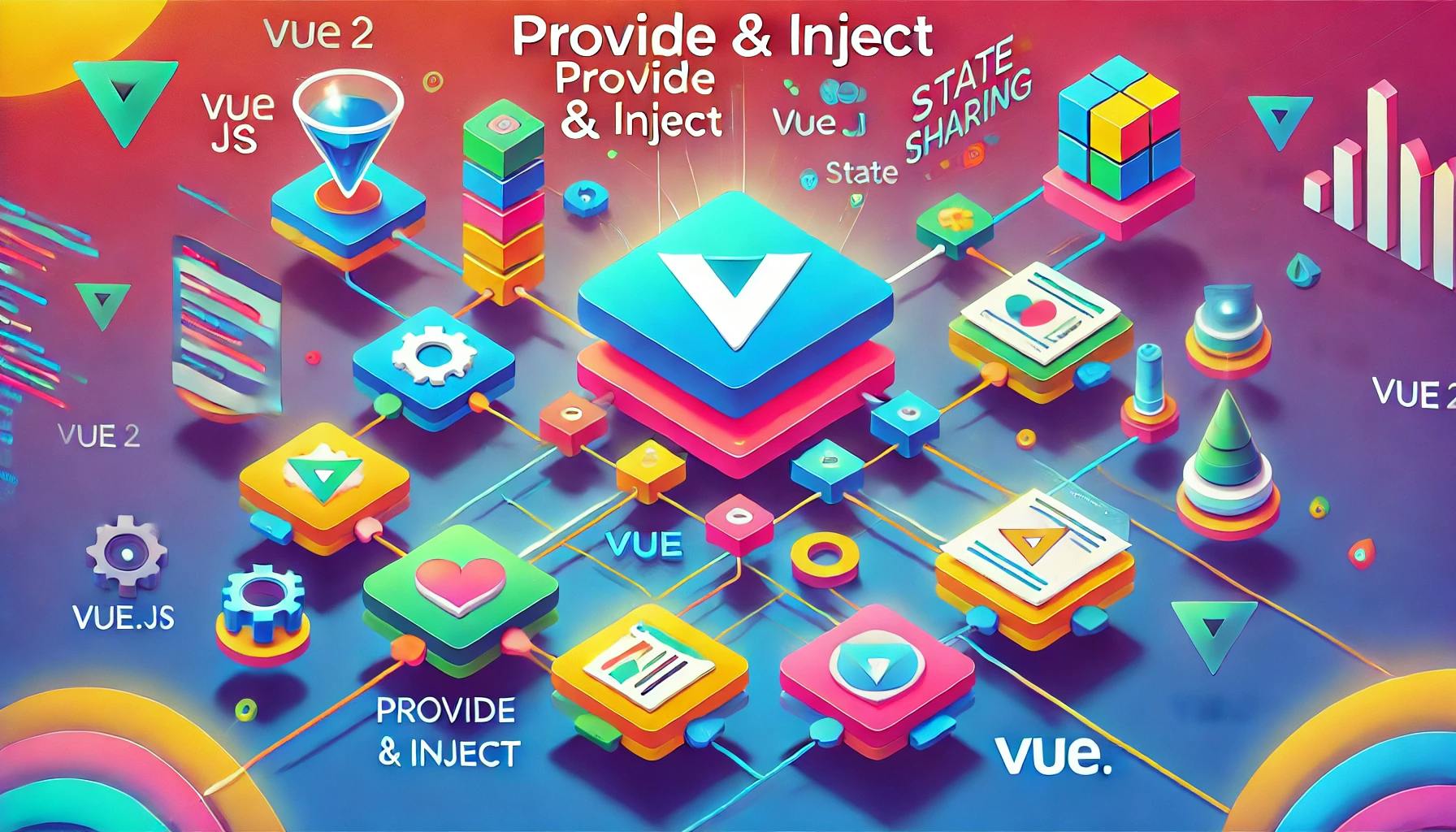Vue 2: Understanding Provide & Inject for Better State Management
Feb 13, 2025

Introduction
Vue.js is known for its simplicity and flexibility, and one of the lesser-known but incredibly useful features in Vue 2 is the provide and inject API. This feature simplifies state management and allows components to share data without the need for Vuex or prop-drilling.
If you've ever struggled with passing props deeply through multiple component layers, provide and inject will make your life much easier. In this article, we'll explore how this feature works, its advantages, and practical use cases.
How Provide & Inject Works
The provide and inject API in Vue 2 enables a parent component to provide data, which any of its descendant components can consume directly, without needing to pass props manually.
1. Providing Data in the Parent Component
The provide option is used in the parent component to define data that will be shared with descendant components.
<template> <div> <ChildComponent /> </div></template><script>export default { provide() { return { theme: 'dark', user: { name: 'John Doe', role: 'Admin' } }; }};</script>In this example, the parent component provides a theme string and a user object to its child components.
2. Injecting Data in the Child Component
Descendant components can access the provided data using the inject option.
<template> <div> <p>Theme: {{ theme }}</p> <p>User: {{ user.name }} ({{ user.role }})</p> </div></template><script>export default { inject: ['theme', 'user']};</script>Now, the ChildComponent has access to theme and user without needing to receive them as props.
Advantages of Provide & Inject
1. Avoids Prop Drilling
One of the biggest pain points in Vue development is prop drilling, where data has to be passed through multiple levels of components. With provide and inject, deeply nested components can access shared data without manually passing props down the hierarchy.
2. Simplifies Global State Management
While Vuex is the go-to solution for state management in larger applications, provide and inject can be a lightweight alternative for sharing global state across components.
3. Enhances Reusability
Since child components do not depend on specific props, they become more reusable and loosely coupled. This makes refactoring and reusing components in different parts of your app much easier.
4. Makes Plugin Development Easier
Many Vue plugins utilize provide and inject to make global services (like authentication or localization) available to any component without additional configuration.
When to Use Provide & Inject
You should consider using provide and inject in the following cases:
- When prop drilling becomes too complex.
- When multiple components need access to the same global data.
- When working with Vue plugins or dependency injection patterns.
- When you need a lightweight state management approach without Vuex.
Conclusion
The provide and inject API in Vue 2 is a powerful but often underutilized feature that simplifies state management and improves code maintainability. If you find yourself struggling with deeply nested props or need a lightweight alternative to Vuex, consider using provide and inject.
Vue 3 has enhanced this API with reactive provides, making it even more powerful, but Vue 2 users can still take full advantage of this feature today.
Do you use provide and inject in your Vue 2 projects? Let me know how it has improved your workflow! 🚀